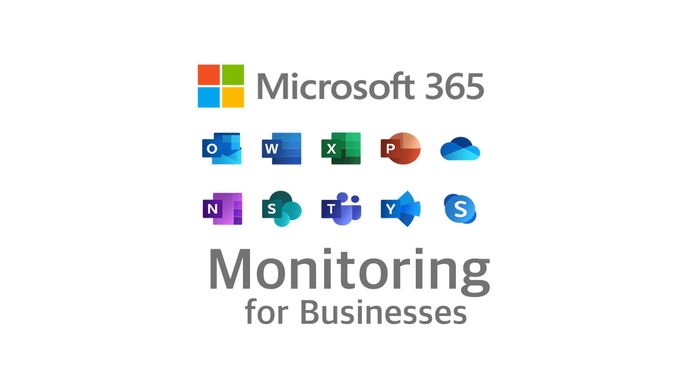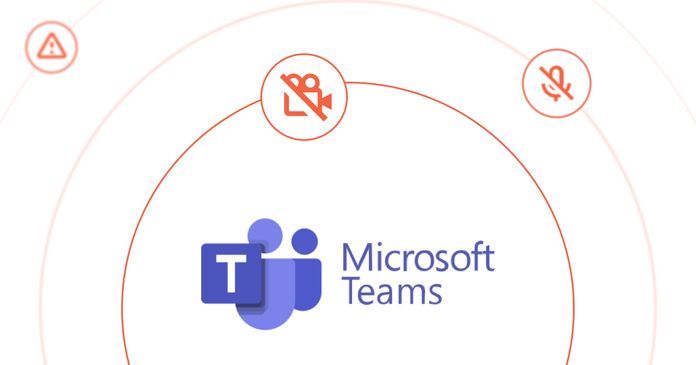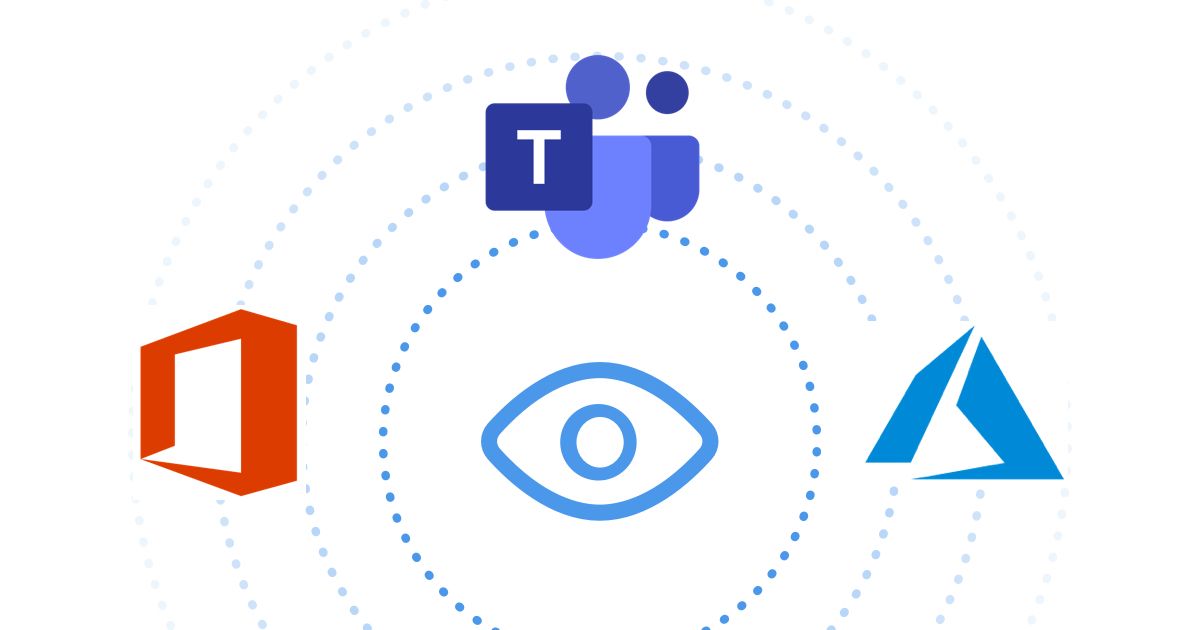Table of Contents
Table of Contents
Microsoft Dynamics empowers enterprises with efficient customer relationship management (CRM) and enterprise resource planning (ERP) capabilities. As organizations increasingly rely on the seamless functioning of Microsoft Dynamics to drive their core processes, the need for robust monitoring practices has become paramount. This is where Microsoft Dynamics Monitoring steps into the spotlight, bridging the gap between uninterrupted productivity and potential disruptions.
In this comprehensive guide, we delve into the critical realm of monitoring Microsoft Dynamics systems using Network Monitoring tools. We explore how organizations can harness the power of these tools to proactively detect, diagnose, and mitigate performance bottlenecks, ensuring that Dynamics operates at its full potential. By shining a light on the vital metrics to track, the integration of network monitoring tools, and the real-world benefits of such a strategy, we equip you with the knowledge to elevate your Dynamics experience.
Join us on this journey as we uncover the intricacies of Microsoft Dynamics Monitoring and reveal how the synergy between cutting-edge technology and vigilant oversight can elevate your business operations to unprecedented levels of efficiency and reliability.
Certainly! Here's an expanded section providing a brief overview of Microsoft Dynamics and its significance in business operations:
Microsoft Dynamics stands as a suite of intelligent business applications tailored to streamline a wide range of processes, from customer relationship management (CRM) to enterprise resource planning (ERP) and beyond. Designed to address the complexities and challenges of modern business environments, Microsoft Dynamics offers versatile solutions that empower organizations to effectively manage customer interactions, optimize operations, and drive strategic decision-making.
At its core, Microsoft Dynamics seeks to unify various facets of an organization, enabling seamless collaboration between departments and functions. This suite encompasses different modules, each specializing in distinct areas:
- Dynamics 365 CRM: This module focuses on cultivating strong customer relationships by centralizing customer data, interactions, and communications. It equips sales, marketing, and customer service teams with tools to nurture leads, close deals, and provide exceptional support.
- Dynamics 365 ERP: Targeting the intricacies of resource management, finance, and operations, this module aids in optimizing business processes. It enhances supply chain visibility, financial reporting, and inventory management, thereby contributing to cost reduction and operational efficiency.
- Dynamics 365 HR: As the workforce is a cornerstone of any organization, this module addresses human resource management, offering tools for talent acquisition, employee engagement, and performance tracking.
So why is Microsoft Dynamics so widely used in modern business? Here are a few of its advantages for business operations:
- Holistic Data Management: Microsoft Dynamics serves as a unified hub for collecting, storing, and analyzing data across various departments. This unified view enhances decision-making by providing real-time insights into customer behaviour, financial performance, and operational trends.
- Customer-Centric Approach: With Dynamics' CRM capabilities, businesses can tailor their interactions with customers, responding to their needs promptly and delivering personalized experiences. This customer-centric approach fosters loyalty and strengthens brand reputation.
- Streamlined Operations: The ERP component of Dynamics streamlines processes across the supply chain, manufacturing, finance, and more. By automating workflows and minimizing manual tasks, organizations can optimize resource allocation and reduce operational inefficiencies.
- Scalability and Flexibility: Microsoft Dynamics offers scalability, accommodating businesses of varying sizes and industries. It adapts to changing business needs and can be customized to align with specific workflows and processes.
- Data-Driven Insights: The suite incorporates advanced analytics and reporting tools that empower decision-makers with actionable insights. This data-driven approach enables organizations to identify growth opportunities, areas for improvement, and potential risks.
- Cloud-Powered Innovation: Dynamics 365 is built on the Microsoft Azure cloud platform, granting organizations access to cutting-edge technology, security features, and continuous updates without the burden of managing on-premises infrastructure.
In essence, Microsoft Dynamics is more than just a software suite; it's a strategic enabler that helps organizations transform data into actionable insights, streamline operations, and foster lasting customer relationships. As businesses navigate the challenges of the modern marketplace, the significance of Microsoft Dynamics in driving efficiency and competitiveness remains unequivocal.
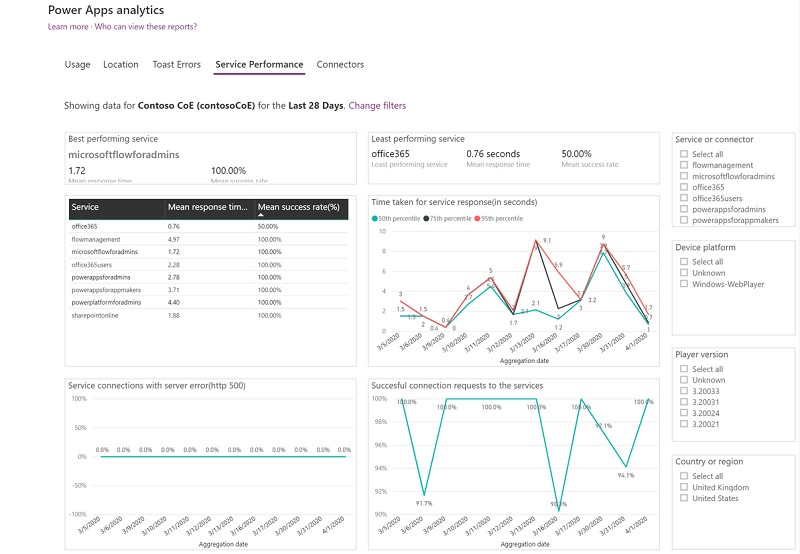

For any business using Microsoft Dynamics, responsiveness, speed, and precision are extremely important. No one wants to log into their Dynamics instance and be forced to deal with slow loading times.
This suite of integrated applications serves as a foundational pillar for effective customer relationship management (CRM) and enterprise resource planning (ERP). It empowers organizations to optimize their operations, enrich customer interactions, and base decisions on data-driven insights.
However, ensuring Microsoft Dynamics seamless performance relies heavily on consistent and diligent performance monitoring. This makes Microsoft Dynamics monitoring an essential component for maintaining peak performance levels.
1. Proactive Issue Detection and Resolution:
Microsoft Dynamics acts as a nerve center for critical business processes, handling vast amounts of data, transactions, and interactions. Any glitch or slowdown in its performance can have far-reaching consequences, affecting customer satisfaction, operational efficiency, and the bottom line. By implementing monitoring practices, organizations can detect performance issues in real-time or even before they impact end-users. This proactive approach enables IT teams to swiftly identify bottlenecks, system errors, or anomalies, facilitating prompt resolution before they cascade into more significant problems.
2. Ensuring User Experience and Productivity:
Modern businesses rely on the seamless functioning of Microsoft Dynamics to drive day-to-day operations. From sales representatives managing leads to finance teams handling transactions, the user experience is directly tied to Dynamics' responsiveness and speed. Monitoring ensures that response times remain optimal, preventing frustrating delays that can hinder productivity and erode employee morale. A well-monitored Dynamics environment leads to smoother user interactions, improved efficiency, and ultimately, a positive impact on the organization's overall performance.
3. Data-Backed Decision Making:
In the age of data-driven decision-making, the accuracy and availability of information are paramount. Microsoft Dynamics gathers and processes vast volumes of data related to customers, transactions, and operations. Monitoring this data flow ensures its accuracy, integrity, and availability when needed. Accurate and timely data empowers decision-makers to make informed choices that drive business growth, innovation, and competitive advantage.
4. Preempting Scalability Challenges:
As businesses grow, their requirements from Microsoft Dynamics also evolve. Monitoring not only keeps the system's current performance in check but also helps anticipate scalability challenges. By tracking resource utilization, transaction rates, and other critical metrics, organizations can plan for necessary infrastructure upgrades, ensuring that Dynamics can seamlessly accommodate increased loads without compromising performance.
5. Mitigating Security Risks:
Cybersecurity threats are a persistent concern in today's digital landscape. Monitoring Dynamics encompasses not only performance-related aspects but also security considerations. Anomalies in user access patterns, data transfers, or unauthorized system changes can indicate potential security breaches. Effective monitoring tools can raise alerts about suspicious activities, allowing IT teams to swiftly address security vulnerabilities and safeguard sensitive business data.
Microsoft Dynamics monitoring is not just a best practice; it's a strategic imperative. It safeguards the heart of your business operations, ensuring that the systems driving your interactions, transactions, and insights operate seamlessly.
As businesses continue to evolve and rely on technology to gain a competitive edge, the importance of comprehensive and proactive monitoring for Microsoft Dynamics becomes increasingly evident. It's the difference between a business that reacts to challenges and one that anticipates and addresses them, ultimately shaping the trajectory of success.
Application Performance Monitoring, Internal Monitoring, and Network Assessments: The Pillars of Effective Microsoft Dynamics Monitoring
In the intricate world of managing Microsoft Dynamics, ensuring optimal performance isn't just a preference—it's a necessity. This suite of integrated applications lies at the heart of efficient customer relationship management (CRM) and enterprise resource planning (ERP), functioning as the engine that drives operations, customer interactions, and informed decision-making.
However, maintaining the seamless functioning of Microsoft Dynamics requires a multi-faceted approach that goes beyond the surface. This is where a trio of monitoring strategies—Application Performance Monitoring, Internal Monitoring, and Network Assessment—steps in as the guardians of sustained excellence.
APM meticulously watches over the application's behaviour, monitoring response times, transaction rates, and resource utilization. When a user clicks a button or a report is generated, APM is there, making sure these actions are executed smoothly and quickly.
It's like the silent conductor of a harmonious performance, ensuring that every interaction is met with efficiency and precision. With APM in place, businesses can identify and address performance bottlenecks, guaranteeing optimal user experience and operational agility.
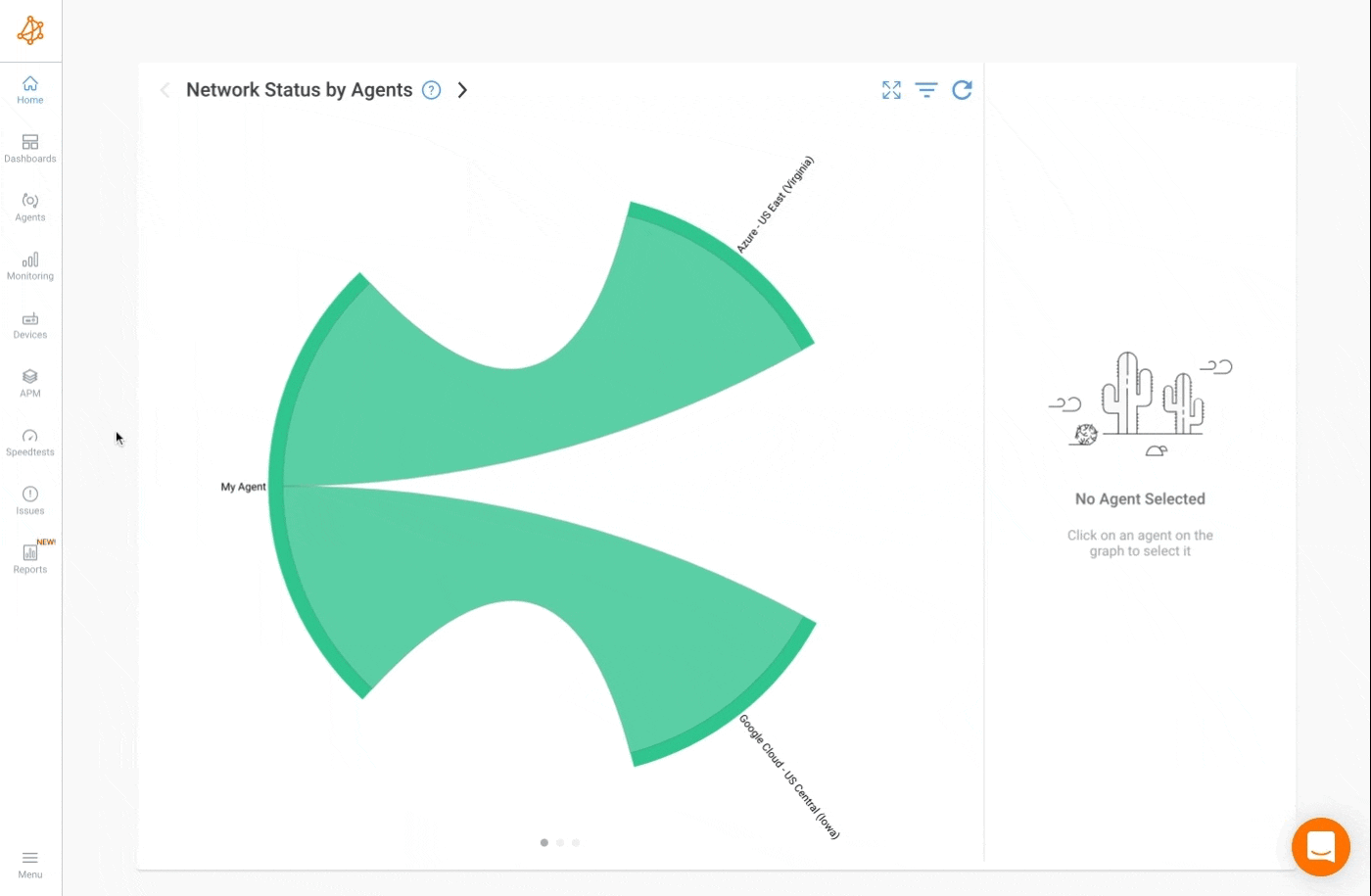
Consider internal monitoring the backstage pass to the world of Microsoft Dynamics. It delves into the system's internal processes, evaluating the utilization of server resources, database performance, and server health. It's like having a peek behind the curtain to ensure that everything is running as it should.
With internal monitoring, IT teams can catch issues before they surface, implementing fixes that prevent disruptions and maintain the integrity of the Dynamics ecosystem.
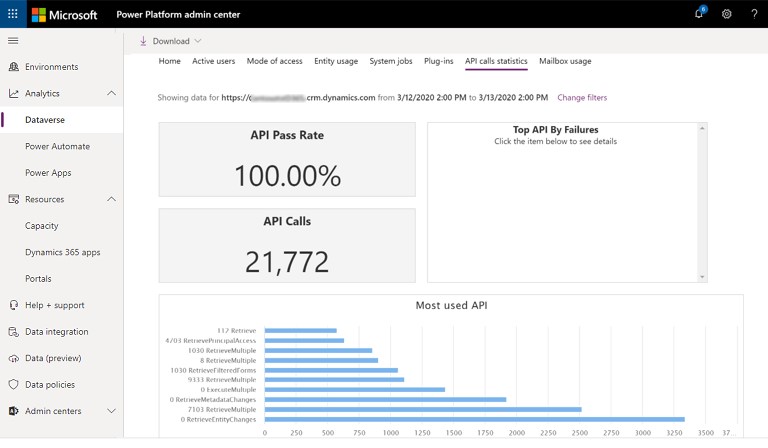
The Dynamics experience doesn't exist in a vacuum—it relies on the intricate dance of network connectivity. Network assessment comes into play here, examining the flow of data between servers and clients. It's akin to checking the roads before a grand parade; you want to ensure everything is clear and traffic is flowing smoothly.
Inevitably, troubleshooting enters the picture. When something goes awry, troubleshooting investigates the root cause of network issues, restoring the pathways that Dynamics relies upon. It's the troubleshooter's toolkit for maintaining an uninterrupted connection between users and their Dynamics.
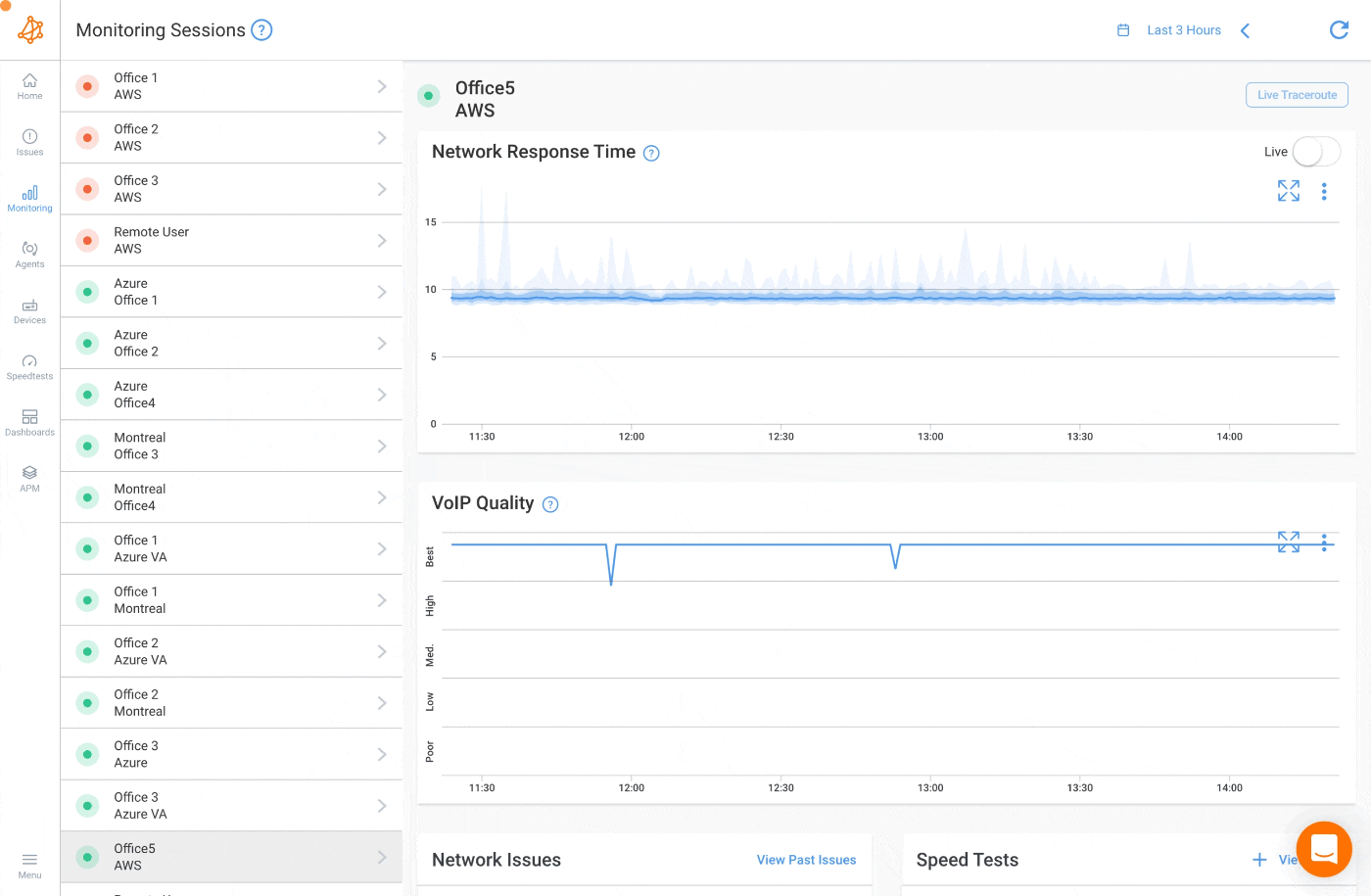
Imagine your business operations as a symphony, with Microsoft Dynamics as the conductor orchestrating each note. Just as a conductor needs a clear view of the orchestra to keep the music flowing smoothly, Dynamics requires a vigilant eye on its network performance to ensure a seamless experience.
This is where Network Monitoring Tools step onto the stage with a critical role to play—a role akin to the conductor's baton, guiding the rhythm of Dynamics performance.
1. Real-Time Visibility into Network Health:
Network monitoring tools serve as the eyes and ears of your Dynamics ecosystem. They provide real-time visibility into the health of your network infrastructure—like having a constant stream of feedback during a live performance. These tools monitor crucial network metrics like bandwidth utilization, latency, and packet loss.
With this data, IT teams gain insights into the network's efficiency and identify potential bottlenecks that might impact Dynamics' performance. Just as a conductor spots a musician out of tune, network monitoring tools highlight areas needing attention.
2. Proactive Issue Detection and Resolution:
Network monitoring tools proactively detect anomalies that could disrupt Dynamics' performance. Whether it's a sudden spike in network traffic or irregular patterns, these tools send alerts to IT teams, enabling them to address issues before they cause significant disruptions. This proactive approach minimizes downtime and keeps Dynamics humming smoothly.
3. Optimizing Bandwidth Allocation:
Network monitoring tools also help optimize bandwidth allocation for Dynamics. They identify which applications are consuming the most bandwidth and can prioritize Dynamics' traffic.
By ensuring that Dynamics gets the bandwidth it needs, these tools guarantee consistent performance, especially during peak usage periods. It's akin to ensuring that the lead instruments in an orchestra are heard clearly.
4. Capacity Planning and Scaling:
As your business grows, your Dynamics network requirements evolve. Network monitoring tools provide insights into usage patterns, helping IT teams plan for capacity increases or infrastructure upgrades.
This ensures that your network can accommodate additional users, transactions, and data flows without a drop in performance. It's like expanding the concert hall to accommodate more attendees without compromising on acoustics.
5. Troubleshooting Network Hiccups:
Network monitoring tools help troubleshoot unexpected network problems, the moment they make an appearance. When Dynamics encounters slowdowns or disruptions, these tools enable IT teams to pinpoint the root causes—whether it's a misconfigured device, a network segment with high latency, or a faulty cable.
With swift identification and resolution, Microsoft Dynamics can get back to its regularly scheduled programming, before end-users feel the effects.
When it comes to Microsoft Dynamics Monitoring, having the right tools in your toolkit can make all the difference. This is where Obkio's Network Monitoring tool takes center stage. With its specialized capabilities, Obkio empowers businesses to take control of their Dynamics performance and create a symphony of seamless operations.

Why Choose Obkio for Microsoft Dynamics Monitoring:
- Tailored Insights: Obkio's tool is designed to cater to the unique needs of monitoring Microsoft Dynamics. It provides specific metrics and insights that directly correlate with Dynamics' performance, ensuring you have the most relevant data at your fingertips.
- Real-Time Alerts: Just as a conductor catches an out-of-tune note instantly, Obkio's tool alerts you in real-time when Dynamics' performance hits a sour note. This proactive approach empowers you to address issues promptly before they become major disruptions.
- User Experience Optimization: Obkio helps you fine-tune the Dynamics experience for your users. By monitoring key network metrics, you can optimize bandwidth allocation and reduce latency, ensuring that your users enjoy a harmonious experience.
- Scalability Readiness: As your business grows, Obkio grows with you. Its insights into network usage patterns aid in network capacity planning and scaling, so you can expand your operations without missing a beat.
Experience Seamless Microsoft Dynamics Performance with Obkio:
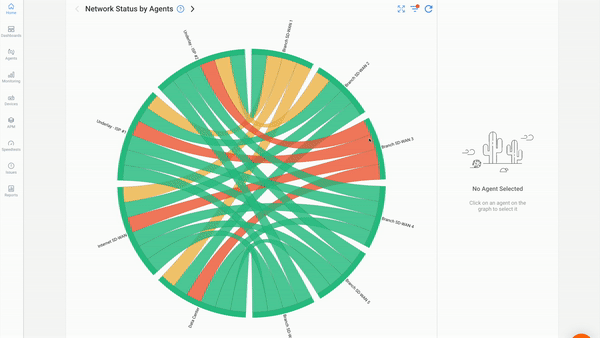
Are you ready to elevate your Microsoft Dynamics Monitoring to the next level? Obkio's Network Monitoring tool is your conductor's baton, guiding you to a performance of optimal efficiency and user satisfaction. Don't let performance hiccups derail your operations—let Obkio keep your Dynamics orchestra in perfect harmony.
Take the stage with Obkio and ensure that every aspect of your Microsoft Dynamics experience is in tune, every time.

Understanding Microsoft Dynamics Monitoring: Exploring Key Performance Indicators, Real-Time Insights, and Automated Solutions
Delving into the realm of Microsoft Dynamics Monitoring involves unravelling the critical components that contribute to its seamless performance. This encompasses grasping the significance of Key Performance Indicators (KPIs) that gauge its health, recognizing the pivotal role of real-time monitoring in elevating user experience and productivity, and addressing the limitations of manual monitoring through the adoption of automated solutions.
KPIs serve as the compass guiding organizations through the landscape of Microsoft Dynamics' performance. These metrics provide insights into the system's health and effectiveness:
- Response Time: The speed at which Dynamics responds to user actions is a vital indicator of its efficiency and user satisfaction.
- Transaction Throughput: This metric gauges how efficiently Dynamics processes transactions, reflecting its capacity to handle workload spikes.
- Resource Utilization: Monitoring CPU, memory, and disk usage offers insights into how Dynamics allocates and manages its resources.
Real-time monitoring acts as a sentinel, ensuring that Dynamics remains in optimal condition by providing:
- Timely Issue Identification: Real-time monitoring detects performance anomalies as they arise, enabling rapid intervention before they escalate.
- Enhanced User Experience: By maintaining seamless interactions, real-time monitoring fosters a positive user experience that's vital for customer satisfaction.
- Continuity in Operations: Through vigilant oversight, real-time monitoring prevents disruptions, ensuring consistent operational flow.
Relying solely on manual monitoring can lead to various pitfalls:
- Human Error: The manual tracking of multiple KPIs can result in errors, hindering accurate performance assessment.
- Scalability Complexity: As businesses expand, manual monitoring becomes intricate, requiring automated solutions to accommodate growth.
- Timeliness: The delayed detection of issues in a manually monitored system can adversely impact productivity.
Automated solutions overcome these challenges:
- Continuous Surveillance: Automated tools offer constant monitoring, reducing the risk of missed issues.
- Instant Notifications: When anomalies occur, automated systems promptly trigger network monitoring alerts, enabling swift corrective action.
- Consistency and Efficiency: Automation ensures accurate and consistent monitoring across all KPIs, improving overall performance assessment.
In navigating the realm of Microsoft Dynamics Monitoring, understanding KPIs, embracing real-time insights, and adopting automated solutions are pivotal. These principles combine to create a cohesive approach that fosters a seamless Dynamics experience, optimizing operations, user interactions, and decision-making.
Discover the art of seamless Microsoft 365 monitoring. Elevate performance, troubleshoot issues, and optimize networks for a superior user experience.
Learn more

In the intricate ecosystem of Microsoft Dynamics, where efficiency and effectiveness reign supreme, monitoring isn't just a practice—it's a strategic necessity. Understanding the essential metrics to monitor within this realm is akin to reading the vital signs of a living entity.
These metrics act as the pulse points that reflect the system's health, guiding you in maintaining optimal performance, enhancing user experiences, and driving informed decision-making.
- Response Time: Gauges how swiftly the system responds to user commands, interactions, and requests, ensuring a seamless user experience.
- Transaction Throughput: Measures how many transactions the system can handle in a specific timeframe, ensuring smooth operations and preventing delays.
- Resource Utilization: Monitors the efficient allocation and usage of server resources (CPU, memory, disk space) to maintain responsiveness.
- Database Performance: Assesses query execution times and database responsiveness to ensure quick access to critical information and transactions.
- Network Latency: Latency measures the delay in data transmission between Dynamics and other components, ensuring smooth interactions.
- Network Bandwidth: Bandwidth monitors the data transfer rate of network connections to prevent bottlenecks and maintain efficient data exchange.
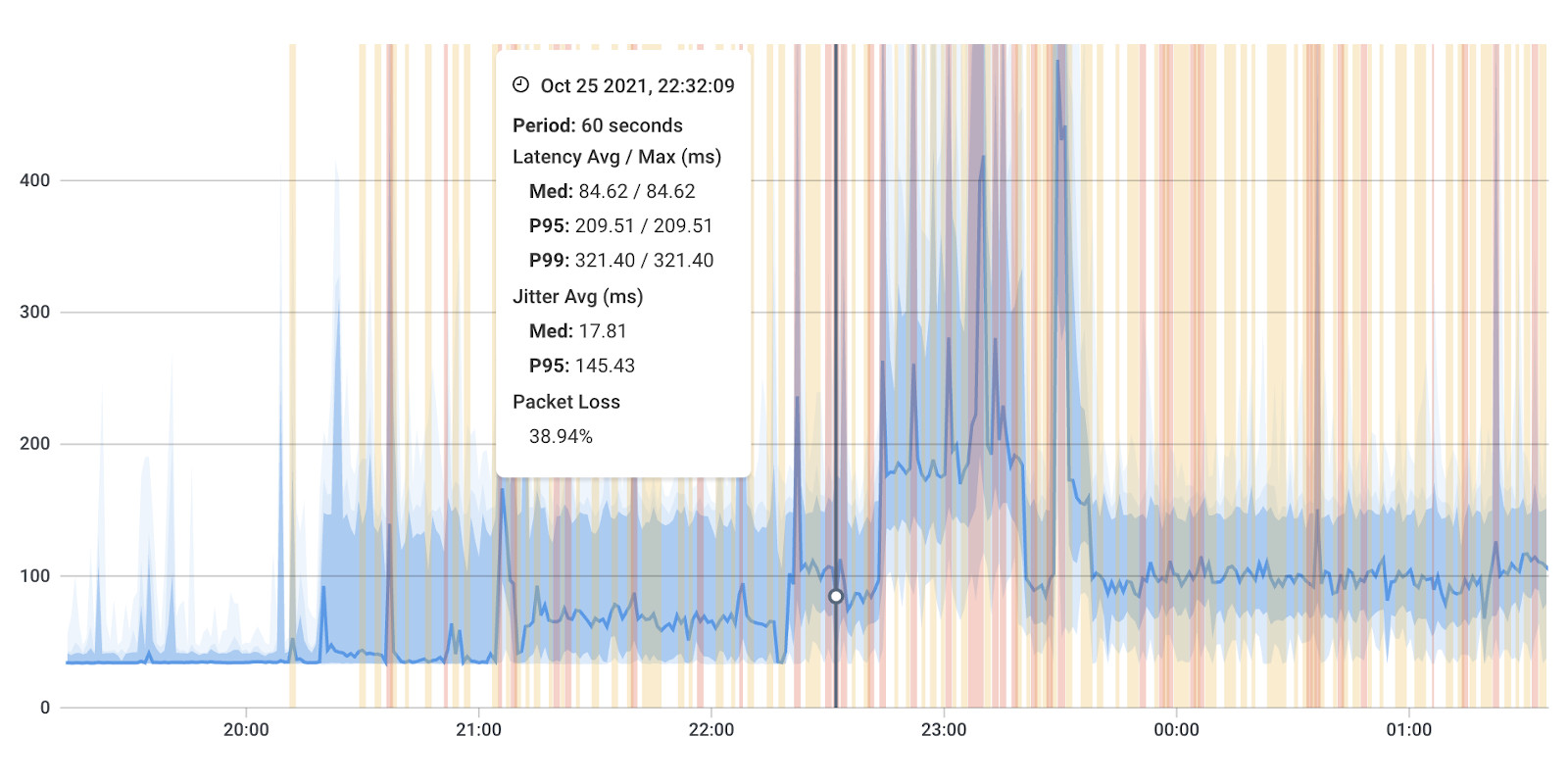

- User Activity and Sessions: Tracks the number of active users, their activities, and session durations to optimize user experiences and guide scalability decisions.
- Error Rates and Failures: Monitors error rates, crashes, and disruptions to swiftly address underlying issues and maintain system integrity.
- Customization Impact: Examines how customizations affect metrics like response time and resource utilization to balance customization and performance.
- Compliance Metrics: Ensures alignment with industry regulations by monitoring security practices and ethical data management.
From Network Performance Monitoring to Application Performance Monitoring (APM) and Network Device Monitoring, Obkio equips organizations with the tools needed to orchestrate a symphony of seamless performance.
Obkio's Network Performance Monitoring feature functions like a conductor's baton, guiding you through the intricate network landscape. It provides real-time insights into network health, latency, and bandwidth utilization.
Network Performance Monitoring allows you to ensure that the pathways connecting Dynamics and its users remain clear and efficient. By monitoring network latency, you can minimize delays in data exchange, ensuring a smooth and harmonious user experience.
Similar to tuning individual instruments in an orchestra, Obkio's APM feature zeroes in on the nuances of Microsoft Dynamics' behavior. It delves into response times, transaction throughput, and resource utilization. This insight-rich tool enables you to optimize Dynamics' performance by identifying and addressing bottlenecks, inefficiencies, and irregularities. Just as a conductor refines each instrument's sound, APM refines Dynamics' operation for optimal efficiency and user satisfaction.

In the symphony of Microsoft Dynamics, network devices play a vital role. Obkio's Network Device Monitoring feature acts as the stagehand, ensuring that every component supporting Dynamics' performance is in top form. By monitoring the health and status of routers, switches, and firewalls, you gain a comprehensive view of network infrastructure. This proactive approach prevents network hiccups and disruptions that could adversely impact Dynamics' performance.
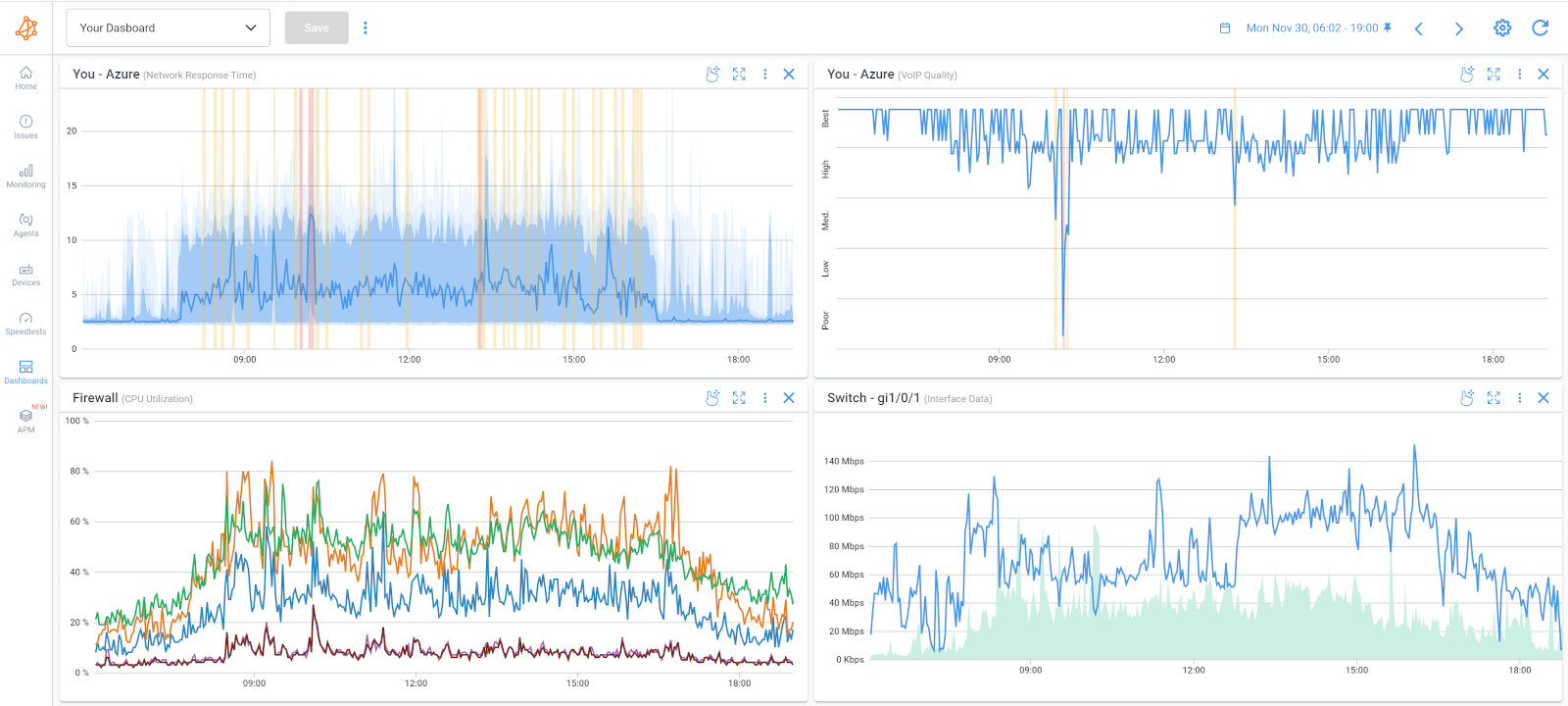
Obkio's combined capabilities orchestrate a holistic approach to Microsoft Dynamics Monitoring. It's like having a skilled conductor, ensuring that every instrument plays in harmony, every note is in tune, and the performance unfolds seamlessly.
By using Network Performance Monitoring to keep the communication pathways clear, APM to fine-tune Dynamics' behaviour, and Network Device Monitoring to maintain a robust infrastructure, you create a performance that resonates with efficiency, user satisfaction, and business success.


Setting Up Obkio Network Monitoring for Microsoft Dynamics Monitoring: Navigating the Path to Seamless Performance
Configuring network monitoring tools for Microsoft Dynamics is a crucial step in optimizing its performance and ensuring uninterrupted operations. And Obkio is your secret weapon!
Obkio Network Monitoring is a powerful tool that helps you keep a vigilant eye on the network dynamics that power your business. Let's dive into the step-by-step guide of configuring Microsoft Dynamics and network monitoring with Obkio, explaining how to choose monitoring parameters effectively, and customizing alerts to keep your Dynamics experience on track.
- Account Creation: Begin by signing up for an Obkio account. You can start with Obkio’s free 14-day trial and choose a plan that works best for you on Obkio’s pricing page later on.
- Onboarding: At this point, Obkio’s Onboarding Wizard will guide you through the 10-minute installation process.

- Agent Installation: Install Obkio’s Network Monitoring Agents at key network locations and devices, including branch offices, head offices, the Internet, the cloud, etc. These Agents act as the ears and eyes of your network monitoring, continuously exchanging synthetic UDP traffic to monitor end-to-end network performance.
- Microsoft Monitoring Agents**: Configure agents to monitor Microsoft Dynamics components. This might involve specifying IP addresses, ports, and relevant protocols. You can also use Obkio’s Microsoft Azure Agent to monitor performance up to the Microsoft Azure cloud.
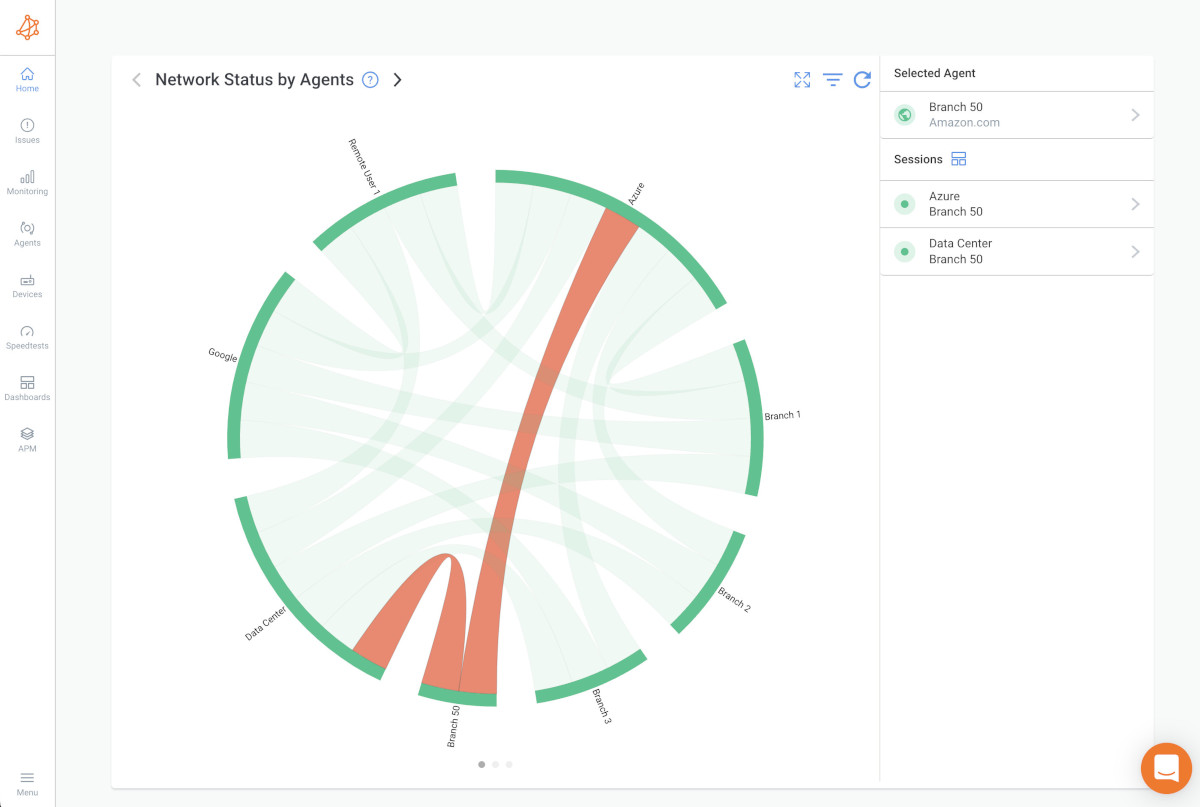
- Application Performance Monitoring (APM): Implement APM to monitor the responsiveness and behaviour of Microsoft Dynamics. Set up key transaction monitoring and user experience tracking.
- Network Device Monitoring: Extend monitoring to network devices like routers and switches with SNMP Network Device Monitoring. Configure Obkio to watch over their performance and ensure smooth data transmission.
- Dashboard Creation: At this point, Obkio’s Agent will begin monitoring and capturing network performance data. Craft a customized dashboard that showcases the metrics you wish to monitor. Arrange widgets for a clear visual representation.
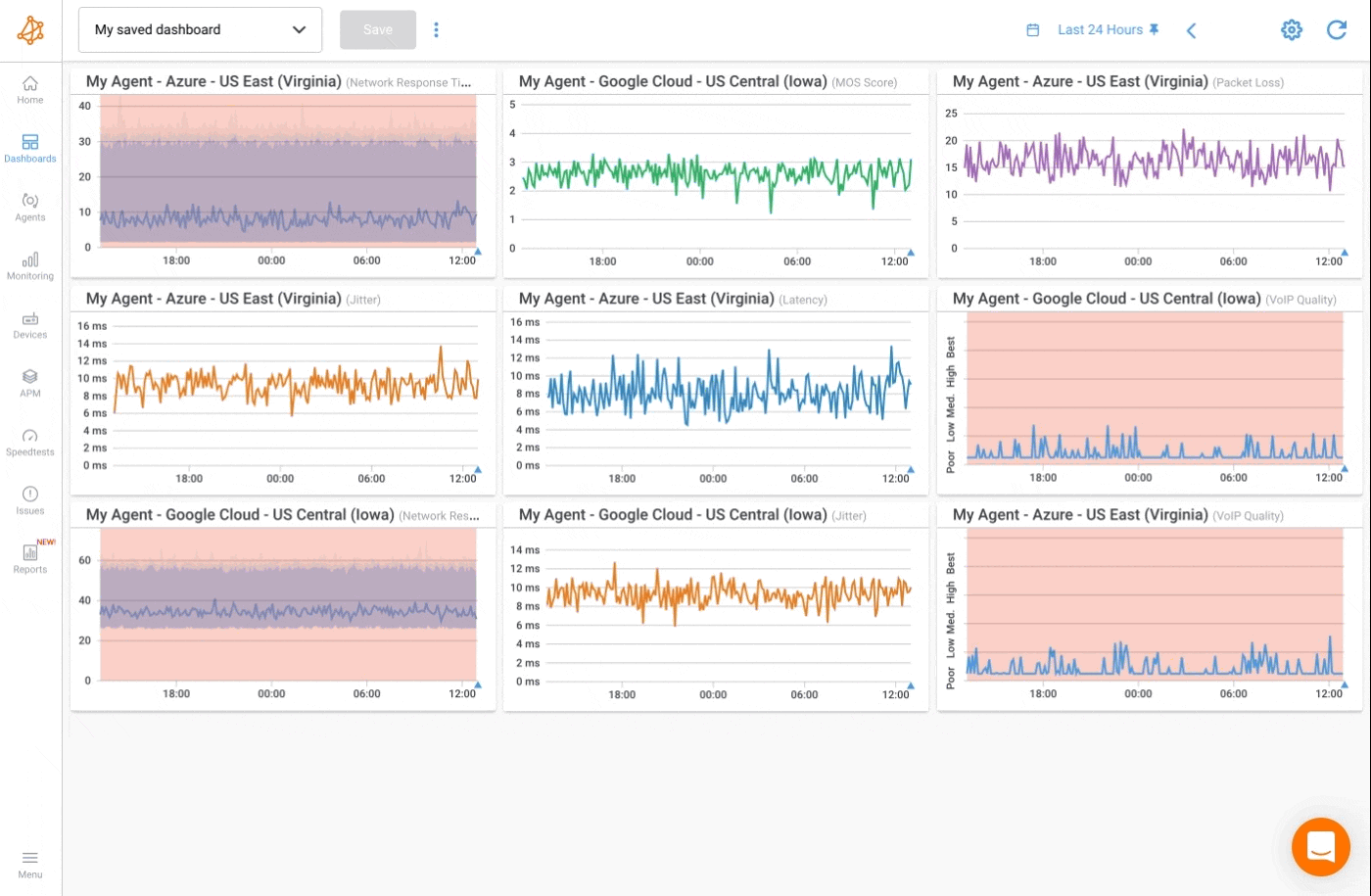
- Continuous Monitoring: Obkio’s Agents exchange synthetic every 500ms to continuously network and monitor Dynamics' network performance. Continuous monitoring offers real-time insights, while less frequent intervals conserve resources.
- Threshold Definition: Set thresholds for each metric you monitor. These are like red flags—when crossed, they trigger alerts. Define levels that align with optimal performance standards.
- Event Identification: Identify critical events that warrant immediate attention. These could include high latency, packet loss spikes, or server unavailability.
- Alert Customization: Customize alerts to match the severity of each event. Assign priority levels, and choose notification channels like email, Slack, Microsoft Teams, or Webooks.
- Notification Escalation: Set up notification escalation procedures for unaddressed critical events. Ensure that the right individuals or teams are informed at the appropriate time.
- Alert Clearing: Configure alerts to automatically clear when the issue is resolved. This prevents unnecessary notifications and streamlines the monitoring process.
By meticulously configuring the monitoring tools, selecting optimal frequencies, and tailoring alerts, you can fine-tune the Microsoft Dynamics monitoring experience.
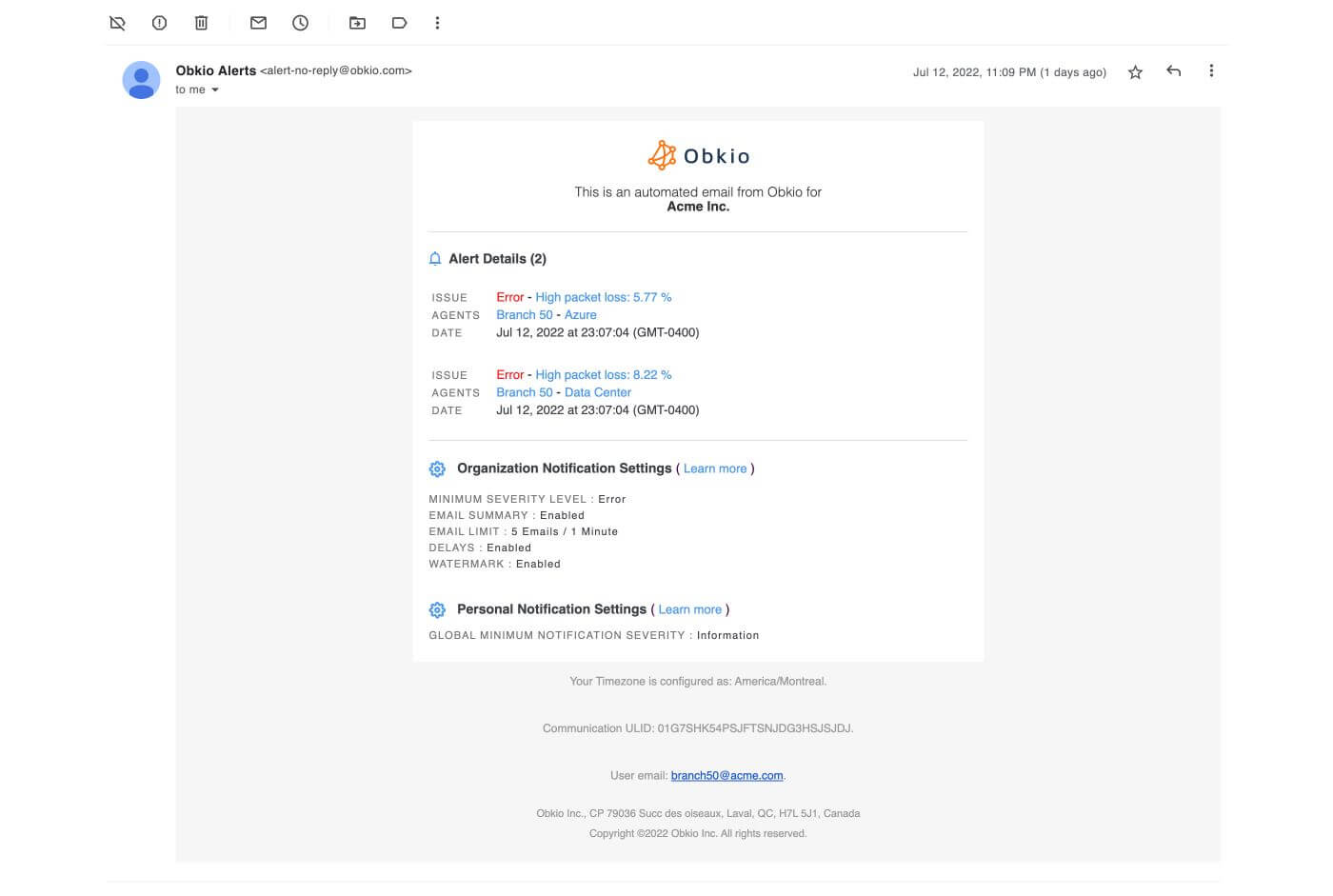
Obkio Network Monitoring becomes your ally in maintaining the rhythm of Dynamics' network performance, delivering seamless performance for all end-users.
When it comes to Microsoft Dynamics, network-related issues are inevitable, affecting the optimal functioning of Dynamics and, subsequently, business operations. Luckily, one of the main goals of Microsoft Dynamics monitoring is to identify and troubleshoot these issues!
To give you a head start, let’s go over the most common performance issues to understand the intricacies of network dynamics performance issues and how they can impact your Dynamics experience.
1. Microsoft Dynamics Network Latency and Connectivity Issues:
- High Latency: Delay in data transmission can cause slow interactions and response times in Dynamics.
- Packet Loss: Packet loss can result in incomplete or incorrect information, affecting the accuracy of transactions and reports.
- Jitter: Inconsistent delays in data transmission, also called jitter, can lead to erratic behaviour in Dynamics and disrupt the user experience.
2. Microsoft Dynamics Bandwidth Limitation Issues:
- Bandwidth Saturation: Insufficient bandwidth can cause congestion, slowing down data transmission and impacting the responsiveness of Dynamics.
- Network Congestion: Heavy network traffic can create and lead to delays in data delivery, affecting the speed at which Dynamics processes user requests.
3. Microsoft Dynamics Network Security and Accessibility Issues:
- Firewall Restrictions: Overly strict firewall settings can block necessary Dynamics connections, leading to restricted access and functionality.
- Security Threats: Malware or unauthorized access attempts can compromise network security, potentially disrupting Dynamics operations and exposing sensitive data.
3. Microsoft Dynamics Network Infrastructure Issues:
- Hardware Failures: Malfunctioning routers, switches, or other network devices can disrupt data flow between Dynamics components.
- Cable or Wiring Problems: Damaged or poorly configured cables can cause intermittent connectivity issues, affecting Dynamics' performance.
4. Microsoft Dynamics Network Configuration Challenges:
- Incorrect QoS Settings: Improper Quality of Service (QoS) settings can lead to improper prioritization of Dynamics traffic, affecting user experience.
- Suboptimal Routing: Suboptimal routing paths can result in longer data travel times, contributing to latency and slow response times.
These issues can collectively or individually impact the performance of Microsoft Dynamics by affecting the network's ability to transmit data accurately and efficiently. Monitoring and addressing these issues promptly is essential to ensure a seamless user experience and maintain the productivity of Dynamics operations.
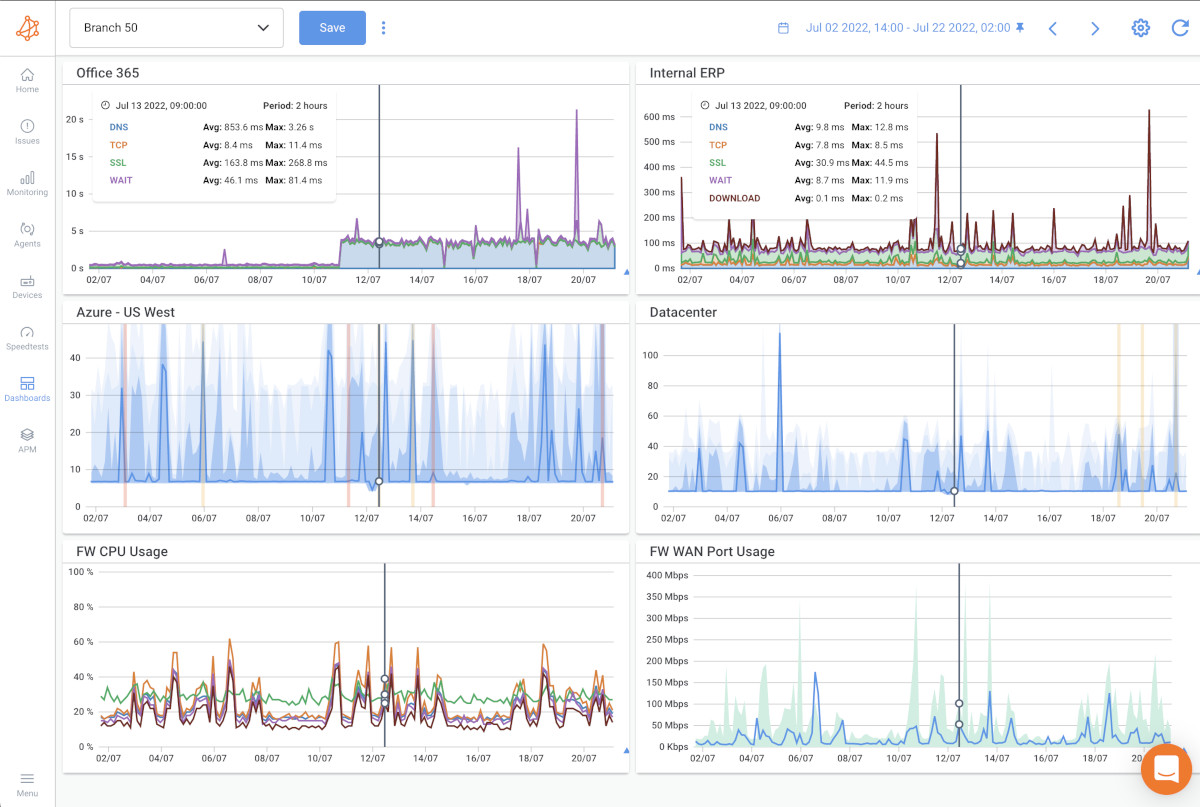

Troubleshooting Microsoft Dynamics Performance Issues: Effective Strategies with Microsoft Dynamics Monitoring
Encountering performance issues in Microsoft Dynamics demands a strategic approach to diagnosis and resolution. With the support of Obkio Network Monitoring and practical tactics, you can efficiently navigate these challenges.
Let’s get into it!
Step 1. Monitor Proactively with Obkio:
Set up Obkio Network Monitoring to maintain continuous surveillance of your network performance. This proactive approach helps you detect potential network issues and Microsoft Dynamics problems before they escalate and affect the end-user experience.
Step 2. Establish Baselines:
Before troubleshooting, establish baseline performance metrics for your Dynamics environment. These benchmarks serve as a reference point for identifying deviations from normal behaviour.
Step 3. Analyze Network Metrics:
Leverage Obkio's network metrics to gain insights into network latency, bandwidth utilization, and packet loss. Any anomalies in these metrics could affect Dynamics' performance. Use these insights to pinpoint potential network-related bottlenecks.
Step 4. Review APM Data:
If you're using Application Performance Monitoring (APM) with Obkio, analyze the APM data to understand how Dynamics interacts with its components. Identify slow transactions, errors, and anomalies in user experience.
Step 5. Check Resource Utilization:
Monitor the resource utilization metrics within Dynamics itself—CPU, memory, and disk usage. Obkio can provide network-level data, while Dynamics' internal monitoring can help identify resource-related performance issues.
Step 6. Investigate Database Performance:
Use database monitoring tools to analyze query performance and database responsiveness. Correlate database performance with network and resource metrics to identify potential bottlenecks.
Step 7. Correlate Alerts:
Obkio's customized alerts play a crucial role. When you receive an alert, correlate it with other relevant metrics to understand the root cause. Combining network and application metrics provides a holistic view.
Step 8. Test During Different Loads:
Recreate the issue in a controlled environment, varying the load on the system. Obkio can help you monitor how the network responds under different loads, aiding in isolating performance bottlenecks.
Step 9. Collaborate with Teams:
Involve relevant teams—network, database, and application—when troubleshooting. Obkio's data can be shared across teams to collectively diagnose and resolve issues.
Step 10. Document Findings and Solutions:
As you troubleshoot, document your findings and the solutions you implement. This creates a knowledge base that can be valuable for future reference.
Step 11. Continuous Monitoring:
Once issues are resolved, continue monitoring with Obkio to ensure that the solutions have effectively improved Dynamics' performance and prevented recurrence.
With Obkio as your monitoring partner, you can troubleshoot Dynamics performance issues with precision. By strategically combining network data, application insights, and collaboration, you can identify and rectify issues swiftly, ensuring consistent Dynamics performance.
Learn how to use Network Monitoring tools for Microsoft Teams troubleshooting to identify and fix common teams performance and connection issues.
Learn more

In the realm of Microsoft Dynamics, where data fuels operations and decisions, the performance of the underlying database is of paramount importance.
This is why Database monitoring is another important factor of Microsoft Dynamics monitoring, ensuring each query, transaction, and retrieval is working as it should.
Database monitoring, within the context of Microsoft Dynamics, refers to the systematic process of tracking and analyzing the performance, health, and usage of the underlying database system that supports Microsoft Dynamics applications.
As Microsoft Dynamics heavily relies on databases to store, manage, and retrieve data, monitoring the database becomes essential for maintaining optimal performance, ensuring reliability, and preventing potential issues.
Microsoft Dynamics relies on a robust database to store, manage, and retrieve crucial information. Slow database performance can translate into sluggish operations, frustrated users, and delayed decision-making.
Database monitoring acts as a sentinel, guarding against bottlenecks, inefficiencies, and potential downtime.
Key Metrics to Monitor:
- Query Response Time: Measures the time it takes for a query to be processed and data to be retrieved. Slow query response times can hinder user interactions and impact overall system performance.
- Transaction Throughput: Evaluates the number of transactions the database can handle within a given timeframe. Monitoring this metric ensures that the database can keep up with user demands.
- Concurrency: Monitors the database's ability to handle multiple transactions simultaneously. High concurrency ensures smooth operations during peak usage.
- Database Locks: Tracks instances where records are locked during transactions. Excessive locking can lead to contention and impact overall performance.
- Index Usage: Observes the usage and effectiveness of database indexes. Well-optimized indexes enhance data retrieval speed.
- Disk I/O: Measures the input/output operations of the disk. Excessive disk I/O can indicate inefficient query execution or storage issues.
- Performance Optimization: Timely identification of slow queries, resource bottlenecks, or inefficient queries allows for optimization, improving overall database performance.
- Proactive Issue Detection: Database monitoring detects potential issues before they escalate, minimizing downtime and user disruptions.
- Capacity Planning: Insights into database load and usage patterns aid in planning for future scalability requirements.
- Data Integrity: Monitoring helps identify anomalies that could impact data integrity, ensuring accurate and reliable information.
- Baseline Performance: Establish a baseline of normal database performance to identify deviations effectively.
- Set Alerts: Configure alerts for critical metrics. Receive notifications when predefined thresholds are crossed.
- Regular Checks: Regularly review database performance metrics to identify trends and patterns.
- Collaboration: Collaborate with database administrators and application teams to troubleshoot and resolve issues effectively.
- Tuning and Optimization: Use monitoring insights to fine-tune queries, optimize indexes, and adjust resource allocation for peak efficiency.
- Historical Analysis: Analyze historical data to identify seasonal patterns or recurring performance issues.


Monitoring Microsoft Dynamics involves overseeing its performance and ensuring smooth operations. The approach to monitoring can vary significantly based on whether Dynamics is hosted in the cloud or maintained on-premise within your organization.
Let's look into the key differences between monitoring hosted (cloud) and on-premise deployments of Microsoft Dynamics.
In a hosted deployment, Microsoft Dynamics is hosted on cloud platforms such as Microsoft Azure or other third-party cloud providers. This setup offers several advantages:
- Scalability: Cloud environments can quickly scale resources up or down based on demand, ensuring optimal performance during peak usage.
- Managed Infrastructure: Cloud providers handle the underlying infrastructure, including hardware maintenance, security, and updates.
- Accessibility: Hosted Dynamics can be accessed from anywhere with an internet connection, facilitating remote work and collaboration.
- Automatic Updates: Cloud deployments often receive automatic updates and patches, reducing the burden on IT teams.
- Resource Allocation: Cloud services provide options to allocate resources based on performance requirements, enhancing efficiency.
When Monitoring hosted Microsoft Dynamics:
- Network Monitoring: Focus on monitoring network latency, bandwidth usage, and connectivity to ensure seamless access.
- Application Performance: Monitor user experience, response times, and transaction success rates.
- Cloud-specific Metrics: Keep an eye on cloud-specific metrics provided by the hosting platform, such as virtual machine performance and resource utilization.
In an on-premise deployment, Dynamics is hosted within your organization's own data center or infrastructure. This setup offers different considerations:
- Control: You have greater control over the environment, including hardware configuration and security measures.
- Customization: On-premise deployments allow for more extensive customization and integration with existing systems.
- Data Control: Sensitive data remains within your organization's infrastructure, which can be advantageous for compliance and security.
- Resource Management: You're responsible for managing hardware resources, updates, and maintenance.
When monitoring on-premise Microsoft Dynamics:
- Server Health: Monitor server health, resource utilization, and potential hardware issues that could impact performance.
- Network Performance: Ensure network connectivity between users and the on-premise servers, monitoring latency and bandwidth.
- Database Monitoring: Keep a close eye on database performance, query execution times, and data retrieval.
- Security: Focus on intrusion detection and prevention, as well as data protection measures.
Regardless of the deployment model, effective monitoring involves setting up alerts for critical metrics, establishing baseline performance, and collaborating with relevant teams to troubleshoot issues promptly. The choice between hosted and on-premise Dynamics often depends on organizational needs, compliance requirements, and existing infrastructure. Tailoring your monitoring approach to the deployment type ensures that your Microsoft Dynamics environment operates smoothly, meeting user expectations and business objectives.
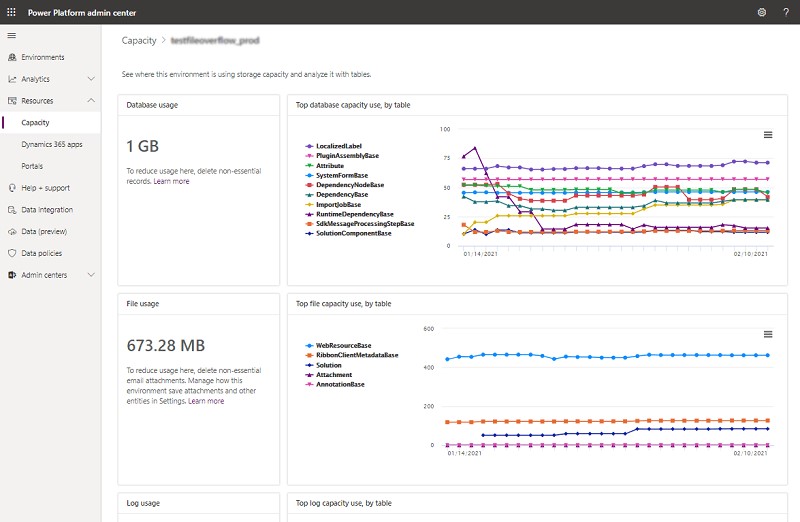
The main reason most people turn to Microsoft Dynamics monitoring is because they want to optimize the performance of their Dynamics instance. Why is that?
Microsoft Dynamics performance optimization is crucial for businesses because it directly impacts various aspects that drive efficiency, customer satisfaction, and overall success.
1. Enhanced User Experience:
Efficient Microsoft Dynamics performance translates into a smooth and responsive user experience. Whether it's sales representatives accessing customer information, support teams managing inquiries, or managers generating reports, a well-optimized system ensures that users can access the required information quickly and without frustrating delays.
A positive user experience boosts productivity, engagement, and overall job satisfaction, leading to better outcomes in customer interactions and internal processes.
2. Improved Customer Satisfaction:
Many businesses rely on Microsoft Dynamics to manage customer interactions and relationships. Slow or glitchy performance can result in delayed responses to customer inquiries, leading to dissatisfaction and potentially damaging the brand's reputation.
By optimizing Dynamics performance, businesses can provide timely and accurate responses, enhancing customer satisfaction and loyalty. A seamless CRM system allows customer service representatives to access relevant data promptly, leading to more personalized and effective interactions.
3. Efficient Business Processes:
Microsoft Dynamics often serves as the backbone of critical business processes, including sales, finance, inventory management, and more. Slow performance can hinder these processes, leading to operational inefficiencies, errors, and missed opportunities. Optimized performance ensures that these processes can be executed swiftly and accurately, enabling better resource utilization, cost savings, and streamlined operations.
4. Scalability and Growth:
As businesses expand, their technology infrastructure must accommodate increased workloads. Optimizing Microsoft Dynamics for performance allows businesses to scale without worrying about slowdowns or system crashes.
A well-optimized system can handle higher transaction volumes, more concurrent users, and additional data without sacrificing performance. This scalability is essential for supporting growth and seizing new opportunities.
Before we end our journey, we want to leave you with some best practices that summarize some of the most important things we discussed in this article.
Effective Dynamics monitoring isn't just about installing tools—it's a holistic approach that involves maintenance, collaboration, and continuous enhancement. By following best practices, you create a dynamic ecosystem where insights from monitoring empower you to orchestrate peak performance and user satisfaction.
1. Regular Maintenance of Monitoring Tools and Configurations:
Keeping your monitoring tools and configurations up to date is essential. Regularly update the tools to access the latest features, bug fixes, and security patches. Review and adjust your monitoring configurations to align with changing business requirements, application updates, and evolving user expectations.
2. Collaboration Between IT Teams and Dynamics Users:
Close collaboration between IT teams and Dynamics users is pivotal. Engage in proactive communication to understand user experiences, pain points, and evolving needs. IT teams can tailor monitoring strategies based on user insights, ensuring that the Dynamics environment is fine-tuned to meet actual requirements.
3. Continuous Improvement Based on Insights from Monitoring Data:
Monitoring data is a goldmine of insights. Analyze the data regularly to identify trends, anomalies, and potential areas for improvement. Use these insights to refine configurations, optimize performance, and address emerging issues before they impact users.
4. Define Clear Objectives and Metrics:
Establish clear monitoring objectives aligned with business goals. Define the metrics that matter most to your organization, such as network response time, transaction throughput, and user satisfaction. Having well-defined objectives helps you focus your monitoring efforts effectively.
5. Set Realistic Thresholds and Alerts:
Configure thresholds and alerts based on realistic performance expectations. Setting thresholds too aggressively can lead to unnecessary alerts, while overly lenient thresholds might miss critical issues. Strike a balance that reflects acceptable performance standards.
6. Monitor User Experience End-to-End:
Monitor user experience from end to end—across devices, locations, and user profiles. This provides a comprehensive view of how users interact with Dynamics and helps identify issues that might be specific to certain scenarios.
As the curtains draw on our exploration of Microsoft Dynamics monitoring, we've uncovered the instrumental role it plays in maintaining the symphony of efficient operations, user satisfaction, and data-driven decisions. From understanding the intricacies of Dynamics' significance to delving into the art of troubleshooting and optimization, we've navigated a journey that empowers you to orchestrate success.
Whether your Dynamics deployment graces the cloud skies or thrives within on-premise walls, the insights garnered from vigilant monitoring are the compass guiding your organization toward peak performance.

Through it all, Obkio’s Network Monitoring tool empowers you to capture the heartbeat of your network, ensuring seamless Dynamics performance. Whether it's unravelling network dynamics, scrutinizing application performance, or optimizing the database's heartbeat, Obkio is your partner in crafting a harmonious experience.
So, as you continue your Dynamics journey, remember that the art of monitoring is the silent conductor of your orchestra, guiding each note toward perfection. The stage is set, and the spotlight awaits—unleash the power of monitoring, powered by Obkio, and let your Dynamics symphony resonate with brilliance.
Ready to Elevate Your Microsoft Dynamics Performance?













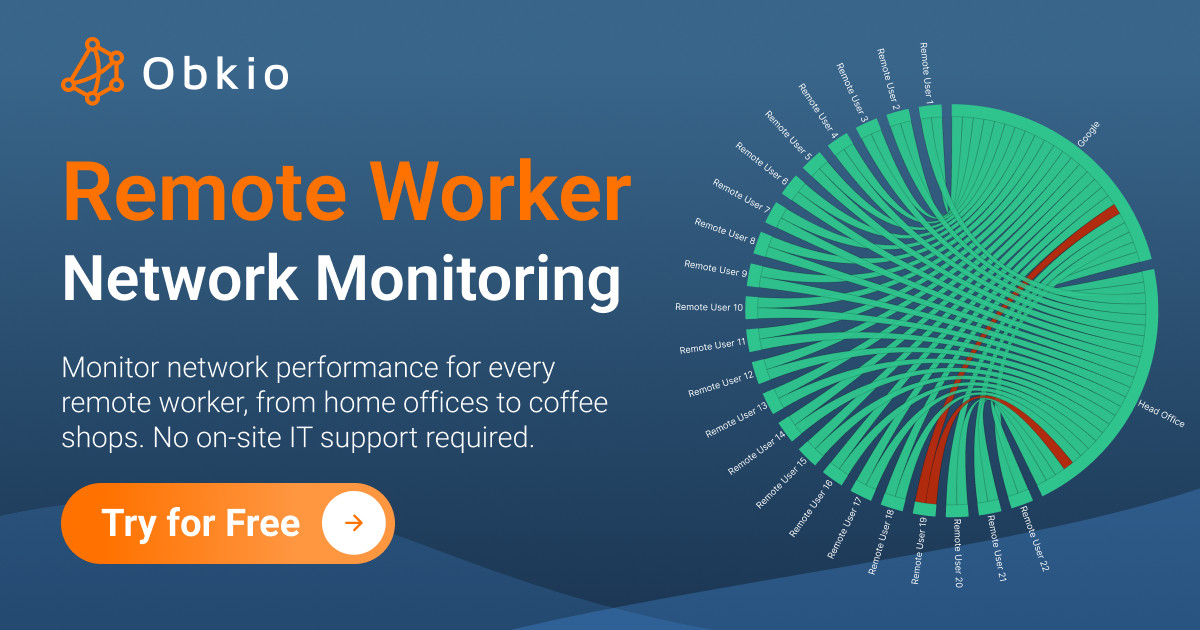













 Obkio Blog
Obkio Blog




